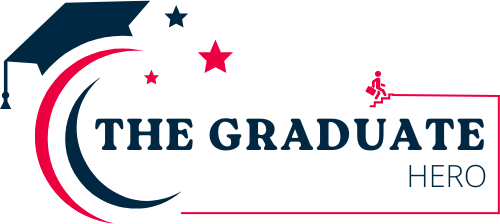Hiring bias is a problem that has plagued organizations for years. Bias in the hiring process can negatively impact the quality of candidates, limit diversity in the workplace, and lead to a less effective hiring process. A common source of bias in hiring is job descriptions. Discriminating language in job descriptions can discourage qualified candidates from applying and result in a narrow pool of applicants. However, AI job description generation offers a promising solution to reducing hiring bias and attracting a more diverse candidate pool. In this article, we'll explore how AI can help create unbiased job descriptions, the potential impact of AI-generated job descriptions on hiring outcomes, and the challenges associated with using AI to reducing bias in recruitment.
The problem with traditional job descriptions:
Traditional job descriptions have been a source of bias in the hiring process for many years. The language used in job descriptions can often be discriminatory, particularly towards certain groups such as women, older workers and people with disabilities. For example, words like 'dominant', 'aggressive' and 'competitive' are often associated with male stereotypes and can discourage women from applying for jobs. Similarly, terms such as “young”, “energetic” and “dynamic” can discriminate against older workers.
Biased job descriptions can have a significant impact on the hiring process. They can discourage suitable candidates from applying, leading to a limited number of applicants. Additionally, discriminatory job descriptions can lead to a less diverse workforce, perpetuating existing stereotypes and limiting opportunities for underrepresented groups. Biased job descriptions can also lead to a less efficient hiring process, as companies may struggle to attract qualified candidates.
How AI can help create unbiased job descriptions:
AI-powered job description creation can help reduce bias in hiring by identifying and eliminating discriminatory language from job descriptions. Using Best AI prompts boosts the productivity of AI tools for writing job descriptions. AI algorithms can analyze job descriptions and spot problematic words and phrases, suggesting alternative language to make the description more comprehensive. This approach can help ensure that job descriptions are written in a way that appeals to a wide range of candidates. By using artificial intelligence, companies can detect and eliminate biased language more effectively and efficiently than human employers.
AI-powered job description generation can also help companies create more accurate and complete job descriptions. By analyzing data from job postings and CVs, AI algorithms can identify the most critical skills and requirements for a particular role, ensuring that job descriptions accurately reflect the requirements of the position. This can help ensure that the job description accurately reflects the expectations of the role and can also help ensure that the recruitment process is more efficient. By automating the process of creating job descriptions, companies can save time and resources and focus more on the hiring process.
The Impact of AI-Generated Job Descriptions on Hiring:
The potential impact of AI-generated job descriptions on hiring outcomes is significant. By removing biased language from job descriptions, companies can attract a more diverse pool of candidates, leading to a more diverse and inclusive workplace. In addition, AI-powered job description generation can increase the efficiency of the hiring process by automating the creation of job descriptions, reducing the time and resources required to write them.
Several companies have already implemented AI job description generation to reduce bias in the hiring process. For example, Unilever used artificial intelligence software to analyze its job descriptions and identify gender-coded language. The company then used this information to rewrite job descriptions, resulting in a 50% increase in female applicants. Similarly, Hilton used AI-powered software to analyze job descriptions and remove biased language, resulting in a 54% increase in the number of diverse candidates.
However, the use of artificial intelligence in recruitment is not without its challenges. There is a risk that AI algorithms will perpetuate existing biases if they are not adequately designed and trained. Additionally, AI-generated job descriptions may lack the personal touch of a human job description, potentially reducing their effectiveness. Companies need to ensure that AI-generated job descriptions are not only bias-free, but also effective in attracting diverse candidates. Companies must ensure that the AI algorithms used to generate job descriptions are adequately designed and trained to reduce the risk of perpetuating existing biases. To address this challenge, companies must carefully monitor the output of AI-generated job descriptions and evaluate their effectiveness in attracting diverse candidates.
In addition to the potential risks associated with using artificial intelligence to reduce recruitment bias, there are also potential benefits. AI-generated job descriptions can reduce the time and resources required to create job descriptions, allowing companies to focus more on the hiring process. In addition, AI-generated job descriptions can ensure that job descriptions accurately reflect the requirements of the position, helping companies attract qualified candidates.
Conclusion:
AI job description generation has the potential to significantly reduce bias in hiring by identifying and eliminating discriminatory language from job descriptions. This can lead to a more diverse and inclusive workplace and increase the efficiency of the recruitment process. By automating the process of creating job descriptions, companies can save time and resources and focus more on the hiring process. However, the use of AI in recruitment must be approached with caution to ensure that existing biases are not perpetuated. Continuous evaluation and improvement is necessary to ensure that AI-generated job descriptions remain unbiased and effective. Companies must also ensure that the AI algorithms used to generate job descriptions are adequately designed and trained to reduce the risk of perpetuating existing biases.
Overall, AI job description generation offers a promising solution for reducing hiring bias and attracting a more diverse candidate pool. As more companies implement AI job description generation, it is important to continue to evaluate the effectiveness of these tools and address any potential challenges. In this way, companies can create a more diverse and inclusive workforce, leading to better outcomes for both employees and the organization as a whole.



